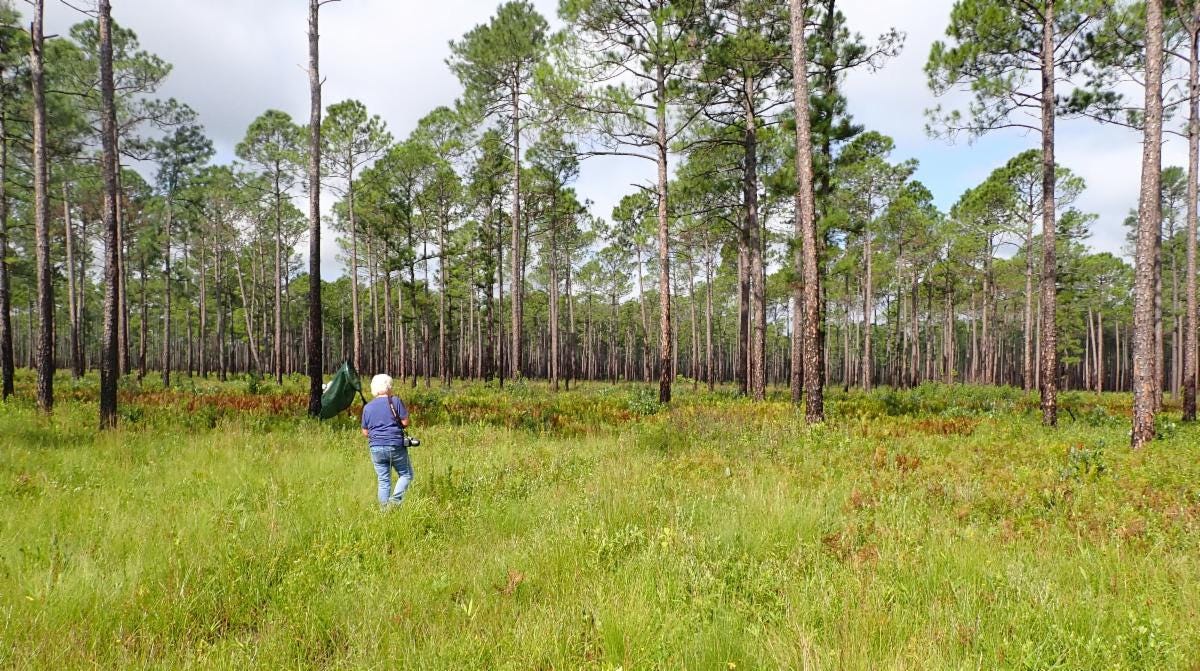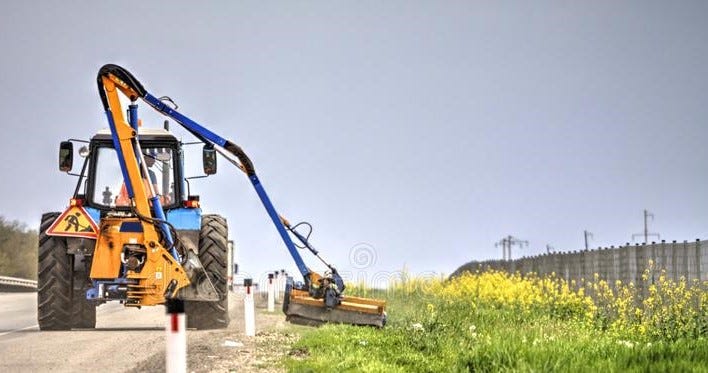If you’ve read my previous articles, you all know I moved from out in the boonies to a more suburban area in February 2024.
At my old homestead, I had endless stretches of dirt roads, farm roads, fields, and wooded areas to roam around in. I looked forward to my daily walks and logged between 25 and 35 miles a week, exploring all the interesting life hiding in the nooks and crannies along the paths. I really miss those walks.
At the time, I published pictures and commentary on my blog, “Through the Lens of a Nature Lover.” Lately, I’ve been re-reading those old posts and reminiscing about the ‘new to me’ flowers, insects, and other critters I discovered in my adventures. Today, I want to share one of them with you. This post is from May 2023.
Farmers driving by in their pick-up trucks or sitting atop a tractor smile and wave as they pass by me. But I can read the question marks behind their friendly gestures. They have no idea what I’m doing or why.
One day, I’ll have a trash bag overflowing with litter collected along my route. The next day, they’ll see me hunched over the overgrown grassy shoulder, camera in hand, searching for flowering weeds. Days later, they shake their heads as they watch me dig up a few plants or gather seeds.
When asked, I tell them I’m on a quest to improve life for the creatures we share this world with. I explain about the decline in native habitats and the insects that rely on the plants.
“I’m simply doing what I can to help restore the balance, and my work must be completed before the roadsides are bush-hogged, destroying the native flora.”
Even though these folks have spent most of their lives in the great outdoors, they’ve never paid that much attention to bees, butterflies, beetles, bats, and birds that rely on having a litter-free habitat with lots of flowering trees, shrubs, and flowers to call home.
I try to impart these simple words of wisdom: No creature, whether it has two, four, six, eight, or no legs, should ever be homeless. Every living being deserves the basics of food, water, and shelter.
By saving the native flowering plants, we can do a little something toward providing the food and shelter these creatures need.
I hope that with their newly acquired knowledge, the farmers will refrain from tossing out empty water bottles, cut back on pesticides, and have more respect for Mother Nature.
Please follow my exploits as I explore the countryside, searching for weird and wonderful plants along with the bugs, birds, and other critters that depend on them for survival. It’s fascinating how such small, insignificant-looking flowers can make such a big difference.
Together, we can learn about the wildflowers no one ever notices. I promise you will not be bored.
~~~~~~~~~~~~~~~~~~~~~~~~~~~~
Dear Reader,
I’d be ever so grateful if you would take a few minutes to recommend Let’s Get Our Hands Dirty to your followers on Substack and other social media platforms.
Thank you!
Greta
---------------------------
Let’s Get Our Hands Dirty is a reader-supported publication. This post is free as are all my posts. Please subscribe so you can receive notification when new articles are published. I’d love for you to become a part of our nature-loving family. Basic subscriptions are free, but if you sign up for a paid subscription as a love offering, that would be wonderful and greatly appreciated!
Have a fabulous day,
Greta
Please use the buttons below to Like, Comment, Restack, and Share my post on Substack and other social media platforms.
THANK YOU SO MUCH!







You are a warrior for our planet.